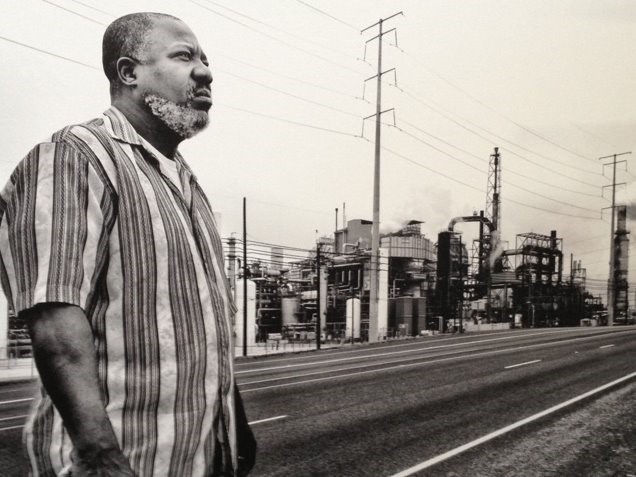By Ellen Holliday

photograph, courtesy of Sierra Club, California
I signed up for the Environmental Justice Core Group because I thought it would be cool to learn more about climate change and its impact. I got more learning than I bargained for! The EJ Core Group did give me a greater understanding of climate change but more importantly about disparate impact discrimination. The purpose of the group was “to gain a deep understanding of the systemic nature of environmental injustice in order to put us in a better position to ‘dismantle’ that system.” Simply put, you cannot change something without understanding it.
What is environmental justice? To really understand that question I needed to learn more about the disproportionate impact of environmental hazards on people of color. The classic case — and defining event in birthing the EJ movement — was in our own state where in 1978, 30,000 tons of PCB-laced soil was placed in a landfill in poor, rural, and majority Black Warren County. In the US, 3 out of 5 Black and Hispanic Americans live in proximity to toxic waste.
We studied different aspects of environmental degradation and the resulting impact on low-income and people of color. The group looked at the causes of environmental injustice; consequences at a local, state and international level related to major industries; the “sixth extinction” and speciesism; a barrage of facts about what is happening across the world; and, finally, what can look like a sunbeam of light with alternative energy, cultural shifts, and the potential of a New Green Deal that addresses some of these issues.
While each session had volumes of data and opinions of experts, the one on local and state issues really caught my attention. I am a Charlotte native and found myself embarrassed at what I did not know about how policies and decisions ensured that people of color and lower-income would bear most of the consequences of local pollution. I have studied Mecklenburg County housing patterns and red-lining so this helped bring together how sanctioned racism has contributed to which neighborhoods have been subjected to the most roads, landfills, industrial processes, flooding, and health concerns.
The information on chicken and hog farms in North Carolina was horrifying. I’ve spent a lot of time in Eastern NC but did not realize the extent of the animal cruelty and environmental impact. I have been eating a lot of black beans since then!
A topic new to me was “speciesism,” which is “a belief that humans can treat other species in a way they would not treat our own species.” Delving into it gave me new appreciation for a colleague who rescued dogs that were used in product testing by a major cosmetics company. Another “ah-ha” was learning more about the timeline of the earth and whether we are approaching the Sixth Extinction (book by Elizabeth Kolbert) where a large number of species are wiped out due to human behavior. There certainly are opposing views, but it connected with what I heard on the video series “Our Planet” by David Attenborough about the rate at which species are dying and the connection between all living things.
It would be a mistake to say I “enjoyed” the nine-month Core Group but words like “benefited,” “lit a fire in my belly,” “raised my level of understanding” come to mind. This experience caused me to change my personal actions and I am eager to think about what we can do differently as a community. I feel fortunate to be part of a congregation that prioritizes learning and advocating for the social and environmental issues of our current times.
